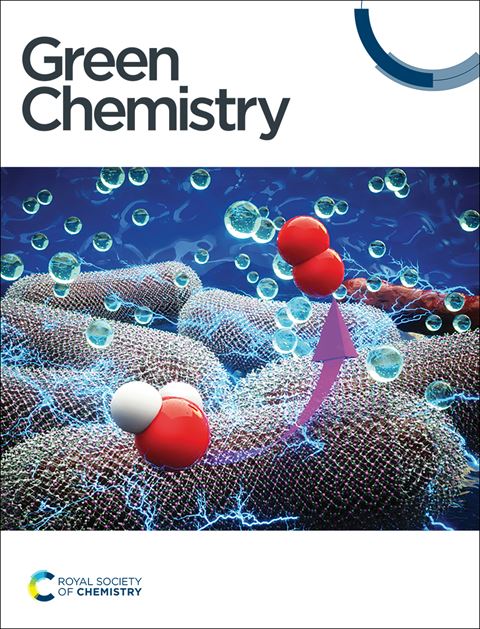具有自修复性能的环保型 MXene 复合涂层的耐腐蚀性能得到增强†。
IF 9.3
1区 化学
Q1 CHEMISTRY, MULTIDISCIPLINARY
引用次数: 0
摘要
虽然人们已经提出了各种自修复复合涂层来实现金属的长期防腐,但如何通过环保和省时的工艺来构建高效、薄的涂层仍然是一个挑战。本文将具有强抗渗性的MXene与单宁酸结合,作为绿色缓蚀剂,设计了肉豆酸钙/MXene铝合金复合涂层。电化学实验证实,复合涂层(~ 21.59 μm)具有较高的耐腐蚀性,在3.5 wt% NaCl溶液中,腐蚀电流密度降低了7.028 × 10−9 a cm−2,超过了肉豆酸钙和肉豆酸钙/MXene涂层的性能。通过电化学测试和表面形貌的变化来评价涂层的自修复能力。损伤后的MXene复合涂层表现出自愈行为,8天后自愈率高达99.53%。这种自愈机制归因于受损部位释放的单宁酸。与有机涂层复杂的功能化和制备过程相比,该MXene复合涂层的综合优势优于先前报道的自修复MXene涂层。本研究为构建自修复MXene涂层提供了一种简便的策略,拓展了MXene的应用潜力。本文章由计算机程序翻译,如有差异,请以英文原文为准。
Enhanced corrosion resistance of an eco-friendly MXene composite coating with self-healing performance†
Though various kinds of self-healing composite coatings have been proposed for long-term corrosion protection of metals toward sustainable development, the construction of highly efficient and thin coatings via an eco-friendly and time-saving process still remains a challenge. Herein, by combining MXene with strong impermeability and tannic acid as a green corrosion inhibitor, a calcium myristate/MXene composite coating was designed for Al alloys. The resultant thin composite coating (∼21.59 μm) exhibited high corrosion resistance, with a decreased corrosion current density of 7.028 × 10−9 A cm−2 in a 3.5 wt% NaCl solution, as confirmed by electrochemical tests, surpassing the performances of calcium myristate and calcium myristate/MXene coatings without tannic acid. The self-healing capability was evaluated by electrochemical tests and the evolution of surface morphology of the scratched coating. The damaged MXene composite coating presented self-healing behavior, with a high self-healing efficiency of 99.53% after 8 days. The self-healing mechanism was attributed to the release of tannic acid from the damaged areas. In contrast to the complex functionalization and preparation process of organic coatings, the comprehensive advantages of this MXene composite coating outperformed those of previously reported self-healing MXene coatings. This work provides a facile strategy for constructing self-healing MXene coatings and expands the application potential of MXene.
求助全文
通过发布文献求助,成功后即可免费获取论文全文。
去求助
来源期刊

Green Chemistry
化学-化学综合
CiteScore
16.10
自引率
7.10%
发文量
677
审稿时长
1.4 months
期刊介绍:
Green Chemistry is a journal that provides a unique forum for the publication of innovative research on the development of alternative green and sustainable technologies. The scope of Green Chemistry is based on the definition proposed by Anastas and Warner (Green Chemistry: Theory and Practice, P T Anastas and J C Warner, Oxford University Press, Oxford, 1998), which defines green chemistry as the utilisation of a set of principles that reduces or eliminates the use or generation of hazardous substances in the design, manufacture and application of chemical products. Green Chemistry aims to reduce the environmental impact of the chemical enterprise by developing a technology base that is inherently non-toxic to living things and the environment. The journal welcomes submissions on all aspects of research relating to this endeavor and publishes original and significant cutting-edge research that is likely to be of wide general appeal. For a work to be published, it must present a significant advance in green chemistry, including a comparison with existing methods and a demonstration of advantages over those methods.
 求助内容:
求助内容: 应助结果提醒方式:
应助结果提醒方式:


